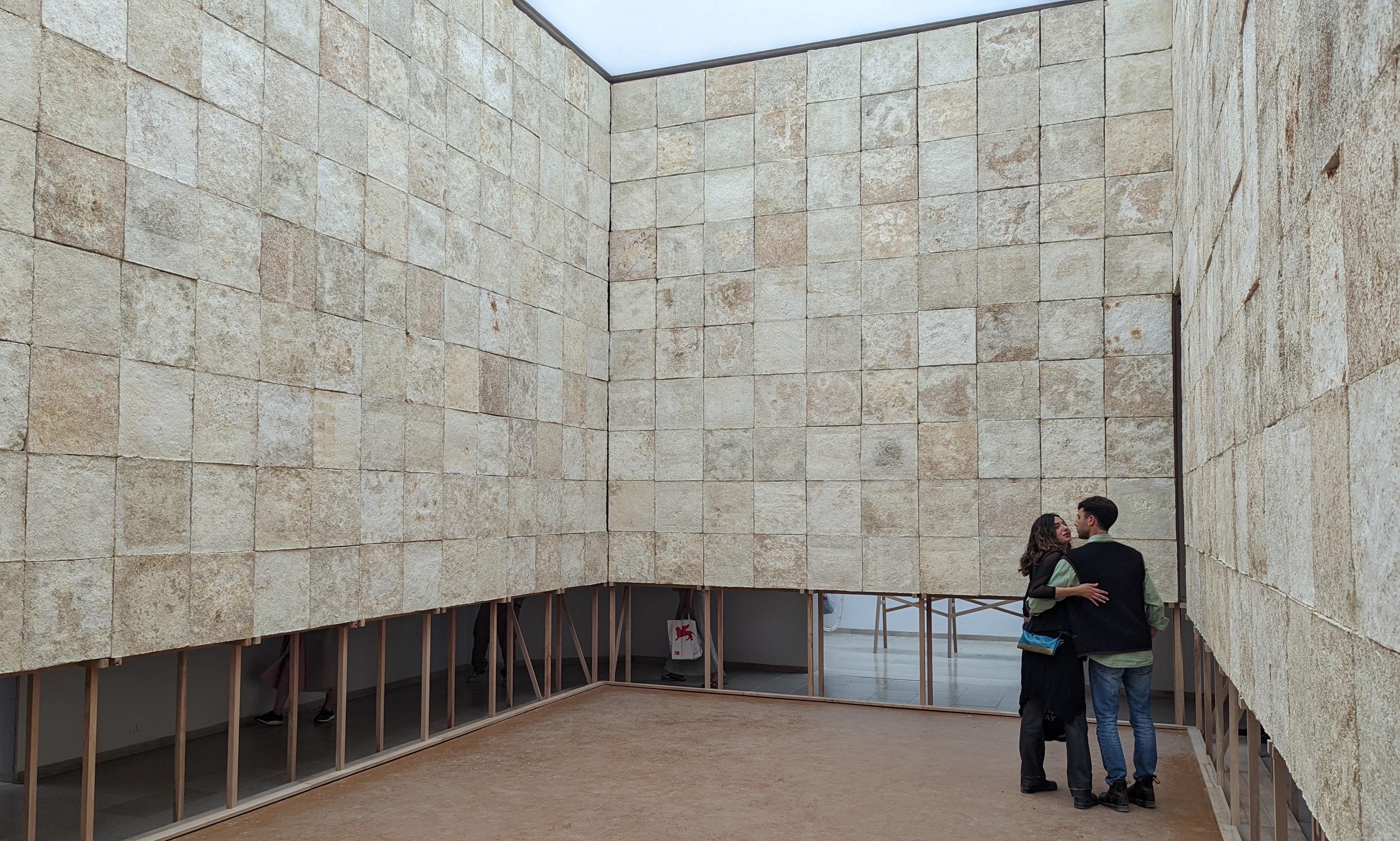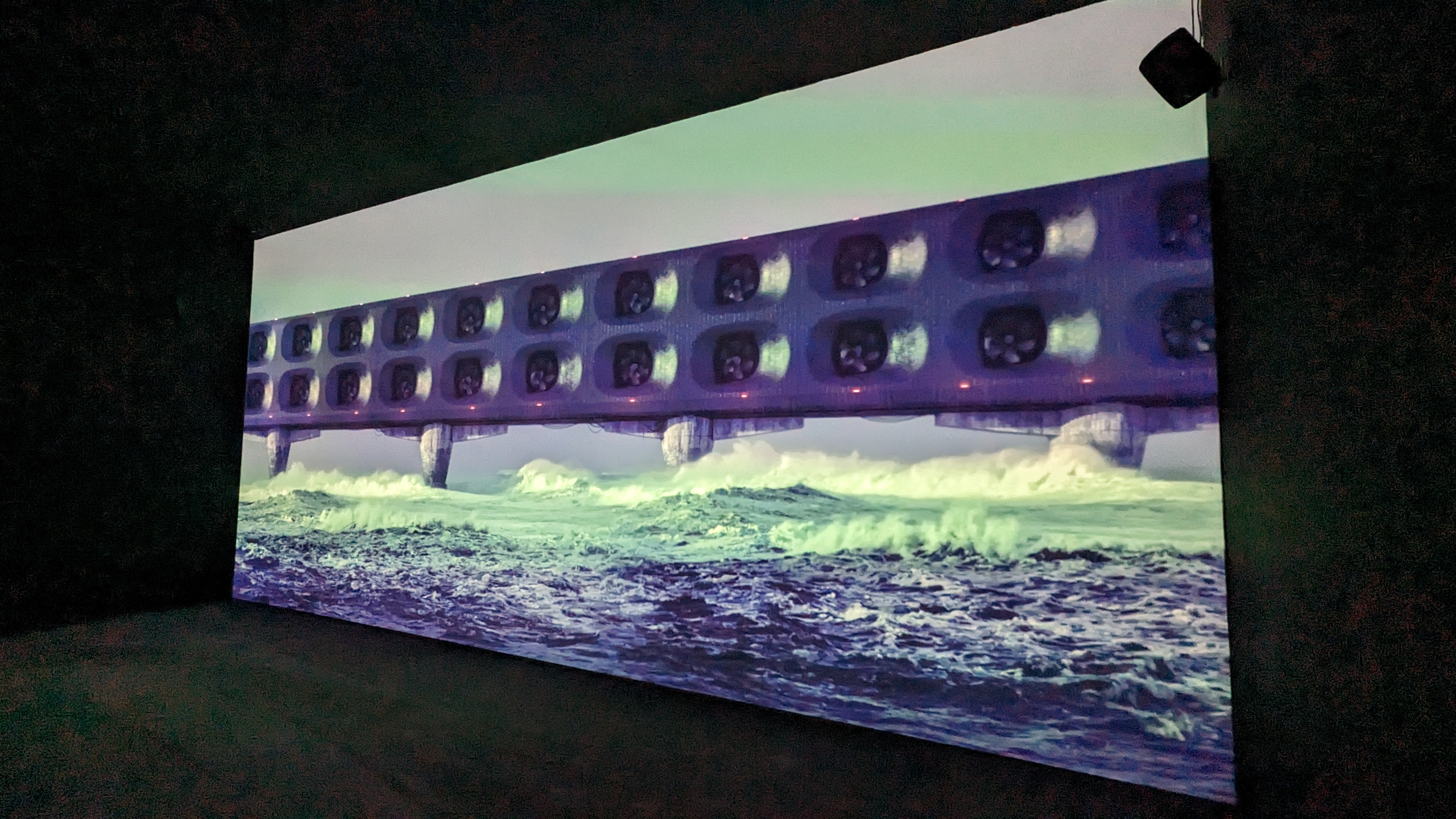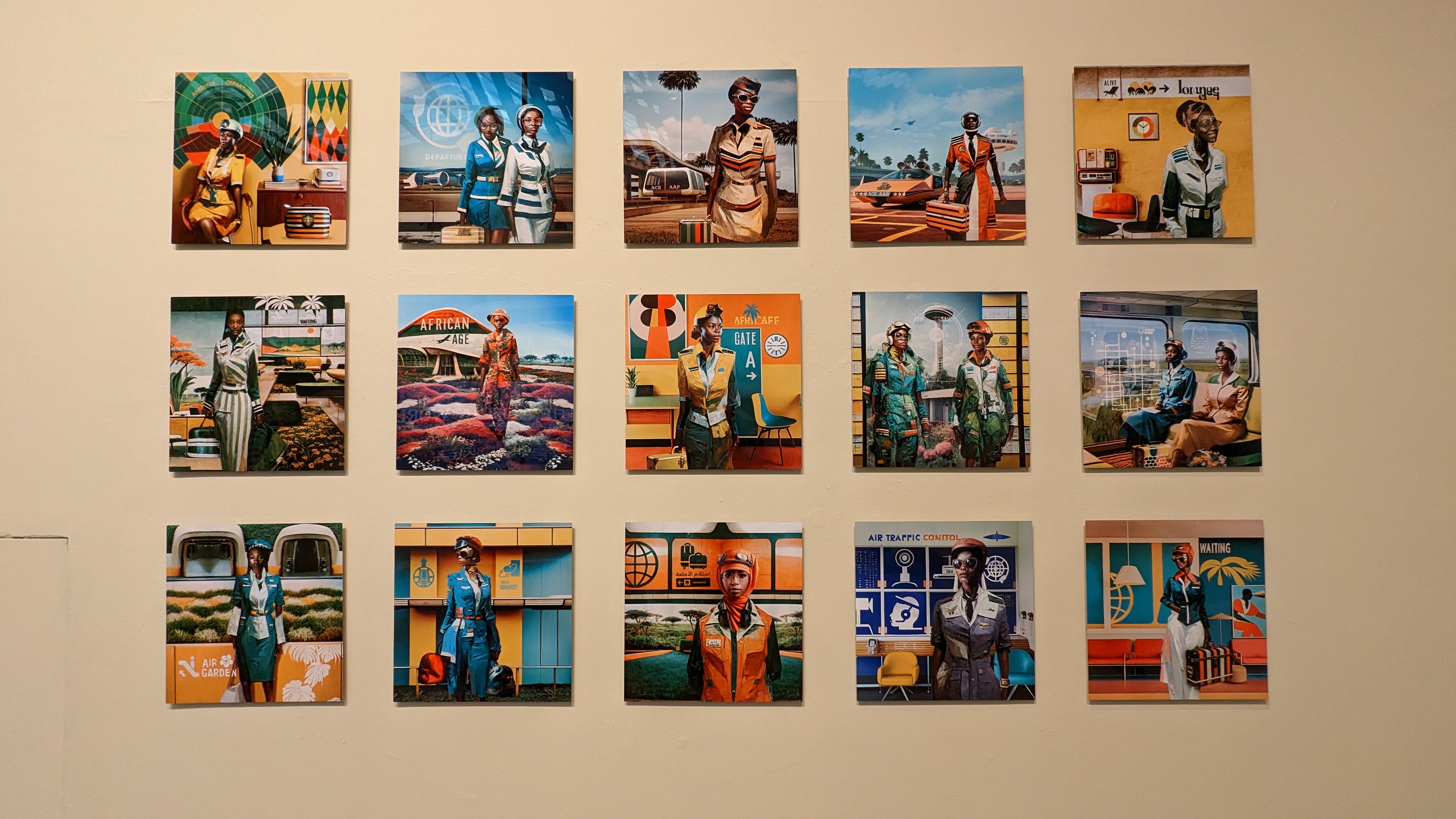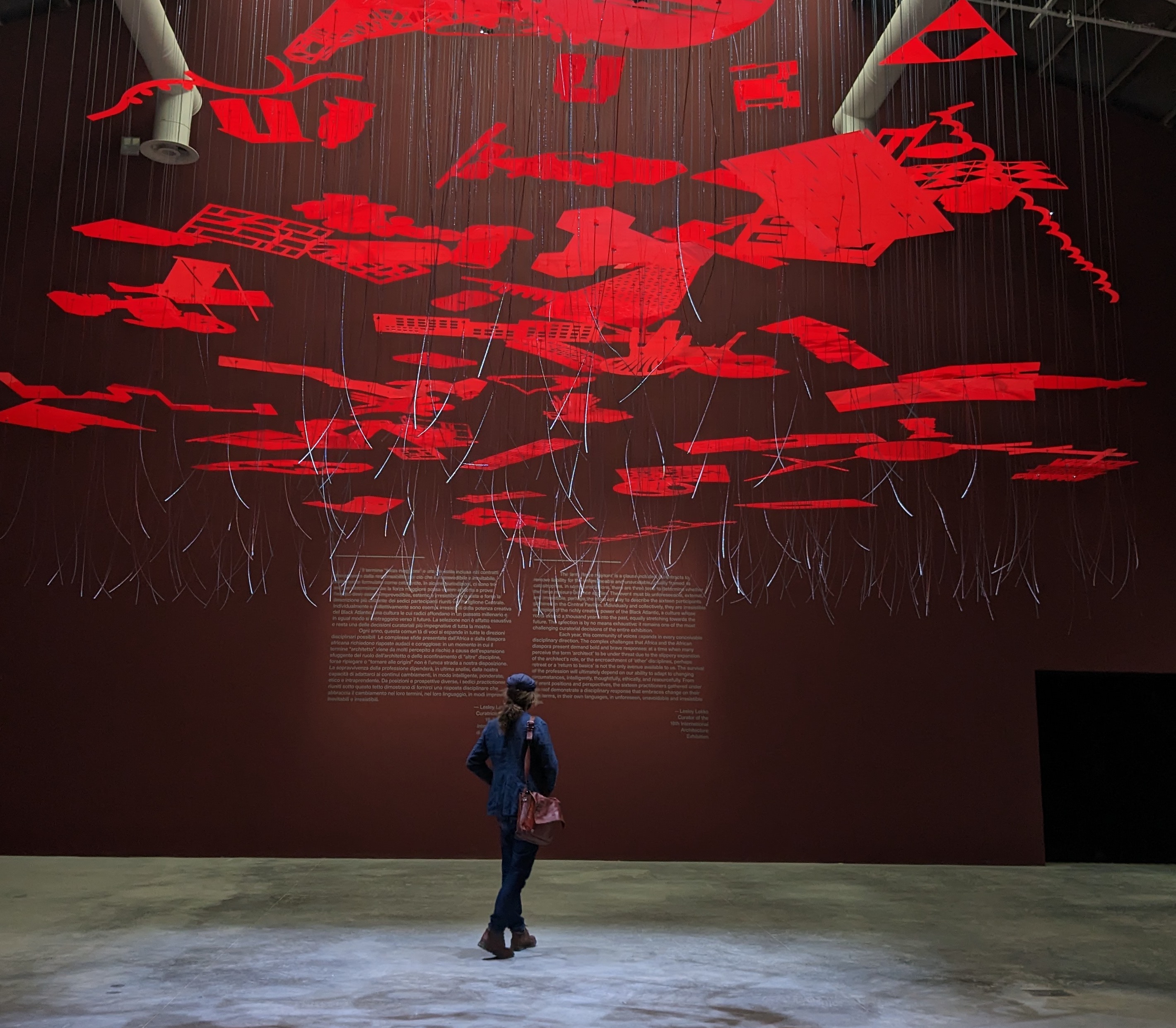There’s no shortage of ways to instigate radical change. Some require genuine revolution - the radiotherapy of social change making: a violent bombardment of a concentration of cancerous cells that ail a country, even at the price of healthy tissue suffering catastrophic damage, too; even at the price of killing the patient. Some require radical horizontal action - think mass civil disobedience on the scale of Tahrir, Maidan, or Tbilisi. And some is a revolution of the imagination: not a propagation of utopia, still less the forcing of one, but an invitation to experience, briefly but viscerally, what a different reality or a liveable future can be like.
The Biennale is just such a space - a psychedelic, intoxicating, almost lurid mash-up of a revolutionary exhibition - marking a turning point in accepted artistic thinking, something like the Exposition Internationale du Surréalisme in Paris in 1938 and a momentous horizontal revolutionary space: a Maidan or a Tahrir Square.
Walking around the Biennale you feel like you’re seeing shards of yet to be assembled into something new. But you already feel them pulsating toward each other, yearning to connect.
To an activist, this assertion immediately invites suspicion, if not ridicule: a bit like saying the Met Gala is where change is gonna come, or that the Grand National is the new Occupy. Grandiose, rarefied and restrictive, the Venice Biennale seems to negate radicalism by its very essence. And what kind of revolution charges you for entry, anyway?
These are fair points, but the answer is not entirely straightforward. First of all, all revolutions have a price - usually much higher than the price of an exhibition ticket, or even a plane ticket. Access to revolutions is unequal (in fact, the more radical and classically militant a revolution, the more privilege plays a part in who gets to sit on a committee and who gets to face the bayonets.)
Second, not all revolutions have the same mechanism and operate on the same timeframe. Some fail; some resolve overnight; others over rounds upon rounds of civil war. Others, still, take decades to emerge out slow seeds, born from cross-pollination of ideas by thinkers, artists and practitioners who would not have met one another if they hadn't been brought to this one space. Experiencing the latter kind revolution is a bit like walking through a field or a forest: anyone can enter and anyone can leave, but most everyone leaves a little altered, carrying stubborn seeds of change and inspiration pollen clinging to their clothes.
This latter type is the kind of revolution this Biennale is - you can feel it, but you can barely see, with your naked eye, the processes it's already kicked off.
Back in the Brazilian pavilion, one of the texts upon the wall introduces the idea of “archeology of the future.” In its immediate context, the artist simply means that the “primitive” sustainable indigenous techniques nowadays relegated to archeology may well outlive the accomplishment and failures of industrialism, and may once again be relied upon to sustain humanity in a post-climate-crisis world. (Indeed, climate change is progressing so rapidly that Spain has already started to re-excavate irrigation channels built before the medieval Christian expansion by Moors, as if precisely to prove the Brazilian's point about non-Western sustainability techniques coming once again to the forefront.)
But "archeology of the future" seems to apply also to the entire Biennale. Visiting it is a bit like being Dr Who, spotting some artefact from the year 3800 AD in a sleepy town in Dorset in 1993. How did this get here? It’s from another era of time and space entirely. Walking around the Biennale, you feel like you’re seeing the shards that are yet to be assembled into something new. But you feel them pulsating toward each other, yearning to connect.
Ideally, such spaces should be sprung in every major city, and the exhibition that collected the world into itself should explode outward into the world again, not adding barriers to an already unequal, segregated, fragmented sector. But in the meantime, the innumerable encounters between minds and minds, and minds and objects in this mad, little corner of this prim, surreal Old World town will change the world yet. If for no other reason, anyone concerned with change and imagination should make their way to Venice, if only just this once, and take a look.
*
Note: We will be publishing a guide next week on to how to visit the Biennale on a budget - but we already advise you to start booking flight tickets to Venice for September and October, when the tourists hordes are gone and you can fly return from London or Manchester for under £60.








